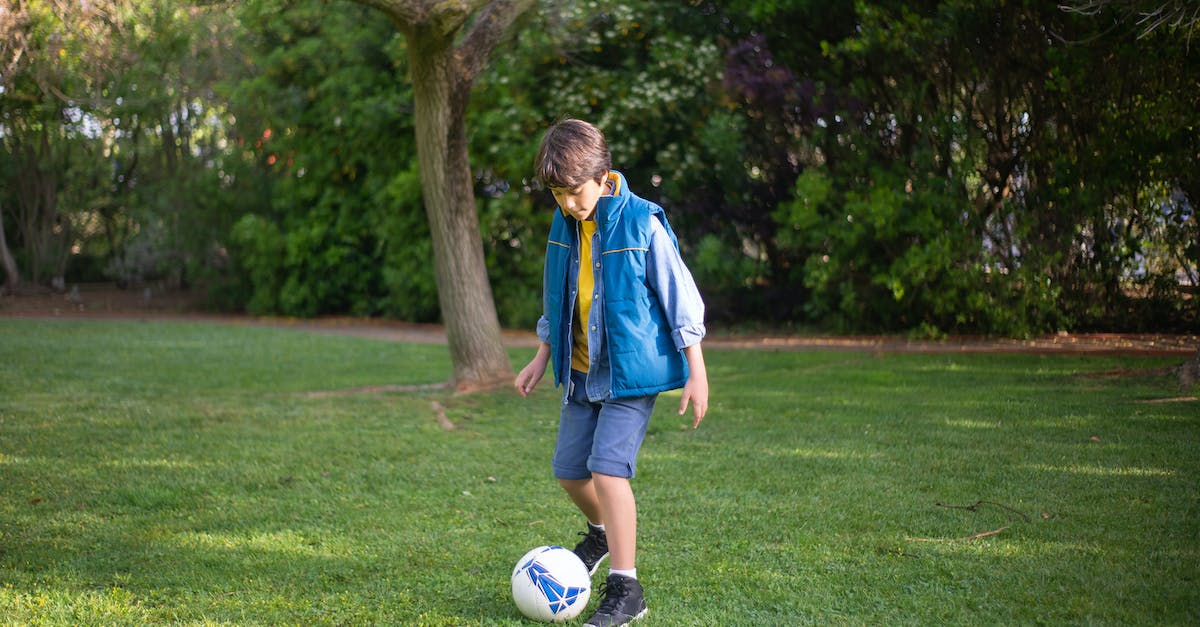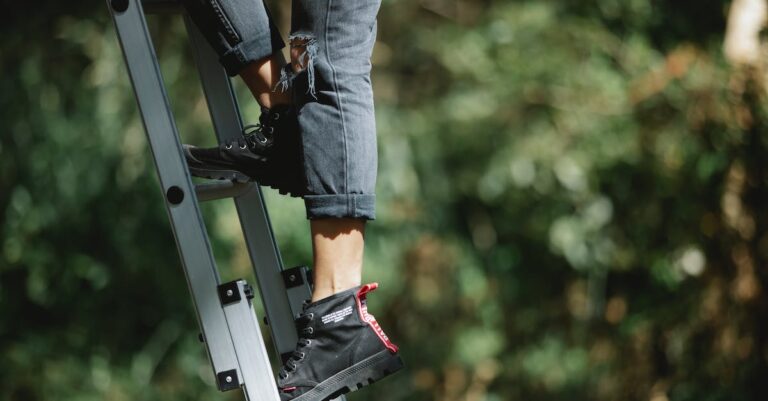Mastering the Air: Tips and Techniques for Advanced Trampoline Skills
Introduction
The importance of mastering advanced trampoline skills
Mastering advanced trampoline skills is crucial for several reasons. Firstly, it allows trampolinists to perform more complex and impressive routines, captivating audiences and judges alike. Additionally, advanced skills enhance an athlete’s overall athleticism, improving their coordination, balance, and spatial awareness. Moreover, mastering advanced trampoline skills can lead to increased confidence and self-esteem, as athletes push their limits and achieve new heights. Lastly, these skills provide a solid foundation for trampolinists to progress further in their sport, opening doors to higher levels of competition and opportunities for success. Therefore, it is essential for trampolinists to dedicate time and effort to mastering advanced trampoline skills in order to reach their full potential and excel in the sport.
Benefits of advanced trampoline skills
Advanced trampoline skills offer numerous benefits for both physical and mental well-being. Firstly, they provide a fun and exciting way to stay active and maintain a healthy lifestyle. Engaging in advanced trampoline skills helps improve cardiovascular fitness, strength, and flexibility. Additionally, mastering these skills can boost self-confidence and self-esteem as individuals overcome challenges and achieve new milestones. Furthermore, advanced trampoline skills require focus, concentration, and coordination, which can enhance cognitive function and improve mental clarity. Overall, the benefits of advanced trampoline skills extend beyond physical fitness, making it a rewarding and enjoyable activity for individuals of all ages.
Overview of the article
The article titled ‘Mastering the Air: Tips and Techniques for Advanced Trampoline Skills’ provides a comprehensive overview of various advanced trampoline skills. It aims to equip readers with the necessary knowledge and techniques to enhance their trampoline skills and take their jumping abilities to new heights. The article covers a wide range of topics, including proper body positioning, advanced flips and twists, and tips for improving air awareness. Whether you are a beginner looking to progress or an experienced trampolinist seeking to master new tricks, this article serves as a valuable resource for anyone interested in advancing their trampoline skills.
Safety Precautions

Wearing protective gear
When it comes to mastering advanced trampoline skills, one of the most important aspects to consider is wearing protective gear. Whether you’re attempting flips, twists, or other high-intensity maneuvers, having the right gear can make all the difference in preventing injuries. A well-fitted helmet, knee and elbow pads, and sturdy athletic shoes are essential for ensuring your safety while pushing the limits of your trampoline skills. Additionally, wearing protective gear can give you the confidence and peace of mind to fully focus on perfecting your technique and achieving new heights in your trampoline journey.
Checking the trampoline for any damages
Before attempting any advanced trampoline skills, it is crucial to thoroughly inspect the trampoline for any damages. Start by checking the frame for any signs of rust or wear. Make sure all the springs are intact and securely attached. Examine the jumping mat for any tears or fraying edges. Additionally, check the safety net, if applicable, for any holes or loose connections. It is important to ensure that the trampoline is in good condition to prevent any accidents or injuries while performing advanced tricks. If any damages are found, it is recommended to repair or replace the trampoline before proceeding.
Setting up a safe trampoline area
When it comes to setting up a safe trampoline area, there are a few key factors to consider. First and foremost, it is important to choose an appropriate location for your trampoline. The area should be flat and free from any obstructions such as trees, fences, or power lines. Additionally, it is crucial to ensure that the trampoline is placed on a soft surface such as grass or sand to reduce the risk of injury. Furthermore, installing safety netting around the trampoline can provide an extra layer of protection, preventing users from falling off. Lastly, regularly inspecting the trampoline for any damages or wear and tear is essential to maintain its safety. By following these guidelines, you can create a safe and enjoyable trampoline area for everyone to enjoy.
Basic Trampoline Techniques

Proper jumping and landing techniques
Proper jumping and landing techniques are crucial for mastering advanced trampoline skills. When jumping, it is important to use your legs to generate power and height. Bend your knees and push off the trampoline surface, extending your body upwards. As you reach the peak of your jump, tuck your knees to your chest and prepare for landing. The landing is just as important as the jump itself. Aim to land with your feet together and knees slightly bent to absorb the impact. Keep your body balanced and avoid landing on the trampoline springs. By practicing proper jumping and landing techniques, you can enhance your trampoline skills and perform advanced tricks with confidence.
Bouncing and rebounding techniques
Bouncing and rebounding techniques are essential skills for mastering the art of trampolining. By understanding and practicing these techniques, trampolinists can achieve greater height, control, and precision in their jumps. One important technique is the proper use of the knees and legs to generate power and momentum. By bending the knees and using a quick, explosive extension, trampolinists can maximize their upward bounce. Another technique is the timing of the rebound, which involves landing on the trampoline bed at the right moment to utilize the energy of the previous bounce. By mastering these techniques, trampolinists can perform impressive aerial maneuvers and take their trampoline skills to new heights.
Body control and balance exercises
Body control and balance exercises are crucial for mastering advanced trampoline skills. These exercises help improve coordination, stability, and control over movements while in the air. One effective exercise is the single-leg balance, where you stand on one leg and maintain your balance for a certain period of time. This exercise strengthens the muscles in your legs and core, which are essential for maintaining stability while performing complex tricks. Another useful exercise is the plank, which targets the core muscles and helps improve overall body control. By incorporating these exercises into your training routine, you can enhance your body control and balance, enabling you to execute advanced trampoline skills with precision and finesse.
Intermediate Trampoline Skills

Front and back flips
Front and back flips are two of the most exciting and challenging trampoline skills to master. These aerial maneuvers require a combination of strength, agility, and precise timing. When performing a front flip, the trampolinist jumps forward and rotates their body in a forward motion, tucking their knees to their chest and extending their legs to complete the rotation. Back flips, on the other hand, involve jumping backward and rotating the body in a backward motion, arching the back and tucking the knees to complete the rotation. Both flips require proper technique and body control to ensure a safe and successful landing. It is important to practice these skills under the supervision of a trained instructor to minimize the risk of injury and gradually progress towards mastering these advanced trampoline skills.
Twists and spins
Twists and spins are essential elements in mastering advanced trampoline skills. These dynamic movements add flair and excitement to any routine, showcasing the athlete’s agility and control in the air. To execute twists and spins effectively, athletes must focus on their body positioning, timing, and coordination. By combining rotational forces with precise body movements, trampolinists can create impressive twists and spins that leave spectators in awe. It is important for athletes to gradually progress from basic rotations to more complex maneuvers, gradually building their skill and confidence. With practice and dedication, trampolinists can unlock a whole new level of aerial mastery through twists and spins.
Combining multiple skills
Combining multiple skills is the key to mastering advanced trampoline techniques. By seamlessly blending different moves and maneuvers, athletes can create impressive and eye-catching routines that showcase their agility and creativity. Whether it’s incorporating flips, twists, or somersaults, the possibilities are endless when it comes to combining skills on the trampoline. This not only adds an element of excitement to the performance but also challenges athletes to push their boundaries and explore new possibilities. With practice and dedication, trampoline enthusiasts can unlock the potential for breathtaking sequences that leave audiences in awe.
Advanced Trampoline Tricks

Double flips and twists
Double flips and twists are some of the most challenging and exciting trampoline skills to master. These advanced maneuvers require a combination of strength, coordination, and precise timing. To successfully execute a double flip, the trampolinist must generate enough height and power to complete two full rotations in the air. This requires a strong takeoff and a tight tuck position throughout the flip. Twists add an extra level of difficulty, as the trampolinist must not only rotate but also twist their body in mid-air. It takes years of practice and dedication to perfect these complex skills, but the thrill of successfully performing a double flip or twist is unparalleled. Trampolinists who have mastered these skills can showcase their talent and athleticism in competitions and exhibitions, leaving the audience in awe of their acrobatic abilities.
Inverted tricks
Inverted tricks are a thrilling aspect of advanced trampoline skills that require a high level of control and technique. These gravity-defying maneuvers involve flipping and rotating the body while in mid-air, creating an impressive display of athleticism and coordination. Mastering inverted tricks on the trampoline requires practice, patience, and a solid understanding of body positioning and timing. It is important to start with basic inversions, such as backflips and front flips, before progressing to more complex tricks like double flips and twists. Safety should always be a top priority when attempting inverted tricks, and proper supervision and equipment should be in place. With dedication and perseverance, trampolinists can unlock a whole new level of excitement and skill by mastering inverted tricks.
Trampoline wall tricks
Trampoline wall tricks are an exciting and challenging aspect of advanced trampoline skills. These tricks involve using the trampoline’s bounce to propel oneself off the wall and perform various acrobatic maneuvers. From simple wall bounces to more complex flips and twists, trampoline wall tricks require a combination of strength, agility, and precise timing. Mastering these tricks not only adds an impressive element to your trampoline routine but also enhances your overall control and coordination. Whether you’re a seasoned trampolinist or just starting to explore advanced skills, trampoline wall tricks are sure to take your bouncing abilities to new heights.
Training Tips and Techniques

Progressive training methods
Progressive training methods are essential for anyone looking to master advanced trampoline skills. These methods involve gradually increasing the difficulty and intensity of training exercises over time. By starting with basic skills and gradually building upon them, athletes can develop the strength, coordination, and technique necessary to perform more complex maneuvers. Additionally, progressive training allows athletes to minimize the risk of injury by ensuring their bodies are properly prepared for the demands of advanced trampoline skills. Whether it’s incorporating new tricks, increasing jump height, or refining form, progressive training methods provide a structured approach to skill development and are key to achieving mastery in the air.
Strength and conditioning exercises
Strength and conditioning exercises are essential for mastering advanced trampoline skills. These exercises not only improve muscular strength but also enhance balance, coordination, and flexibility. Incorporating a variety of exercises, such as squats, lunges, and planks, can target different muscle groups and help develop the core stability necessary for executing complex trampoline maneuvers. Additionally, incorporating cardiovascular exercises like jumping jacks or high knees can improve endurance and overall fitness, allowing trampolinists to perform at their best for longer durations. It is important to consult with a qualified trainer or coach to ensure proper technique and safety while performing these exercises. By consistently incorporating strength and conditioning exercises into their training routine, trampolinists can enhance their skills and take their trampoline abilities to new heights.
Mental preparation and focus
Mental preparation and focus are crucial when it comes to mastering advanced trampoline skills. In order to perform at your best, it is important to train not only your body but also your mind. Developing a strong mental game can help you stay focused, overcome challenges, and perform complex maneuvers with precision and confidence. One key aspect of mental preparation is visualization. By mentally rehearsing your routines and tricks, you can improve muscle memory and enhance your overall performance. Additionally, practicing mindfulness techniques such as deep breathing and positive self-talk can help calm your mind and reduce anxiety before attempting difficult moves. By incorporating mental preparation and focus into your training regimen, you can take your trampoline skills to the next level and achieve mastery in the air.







